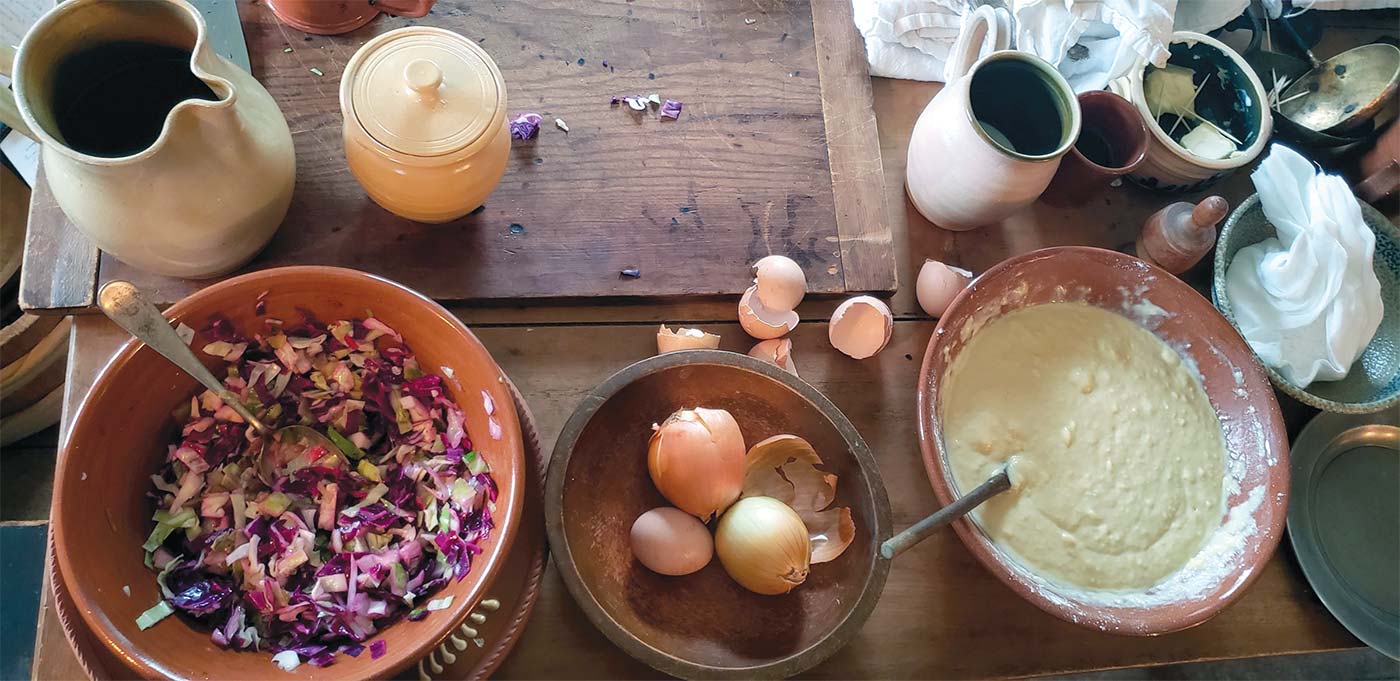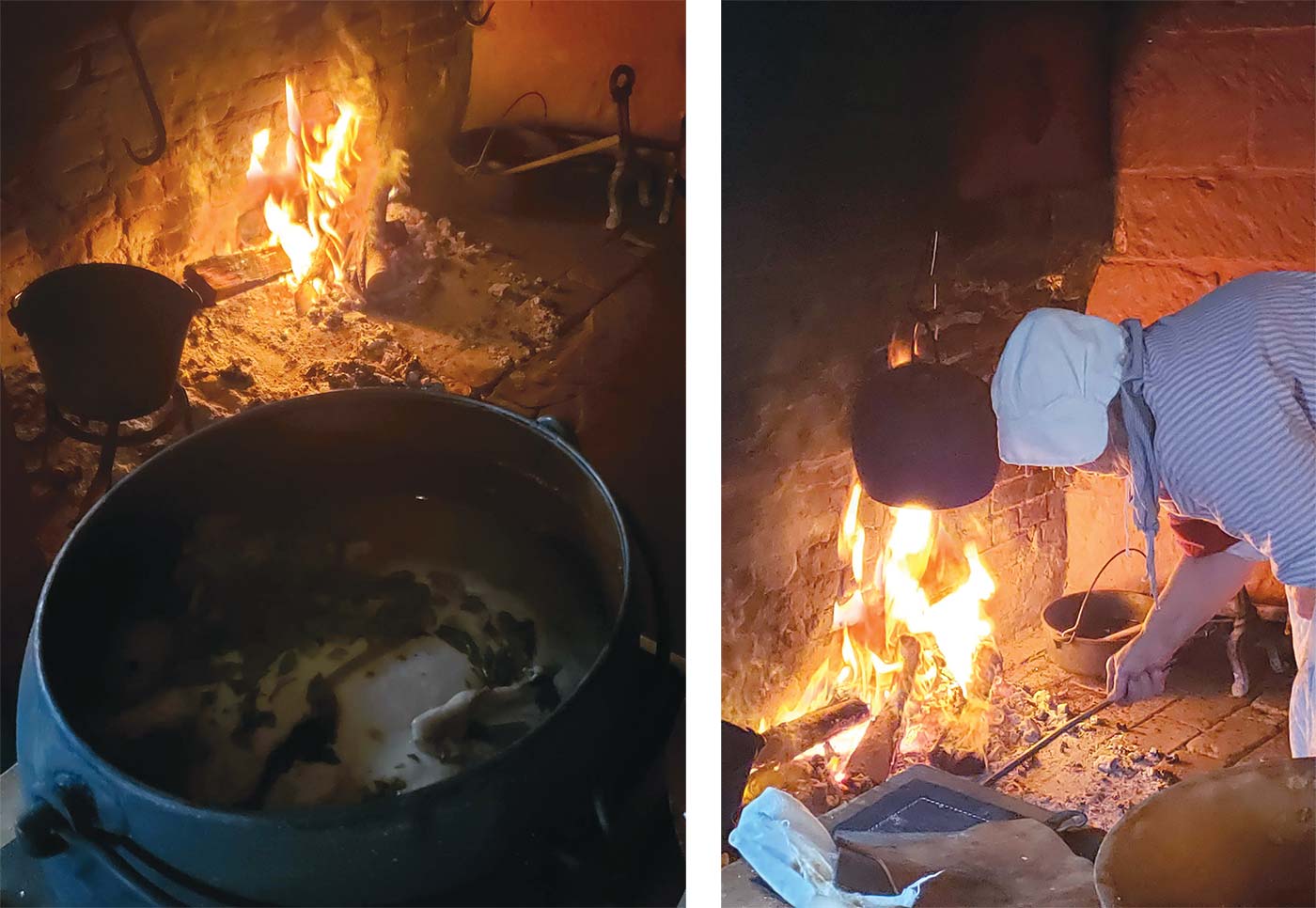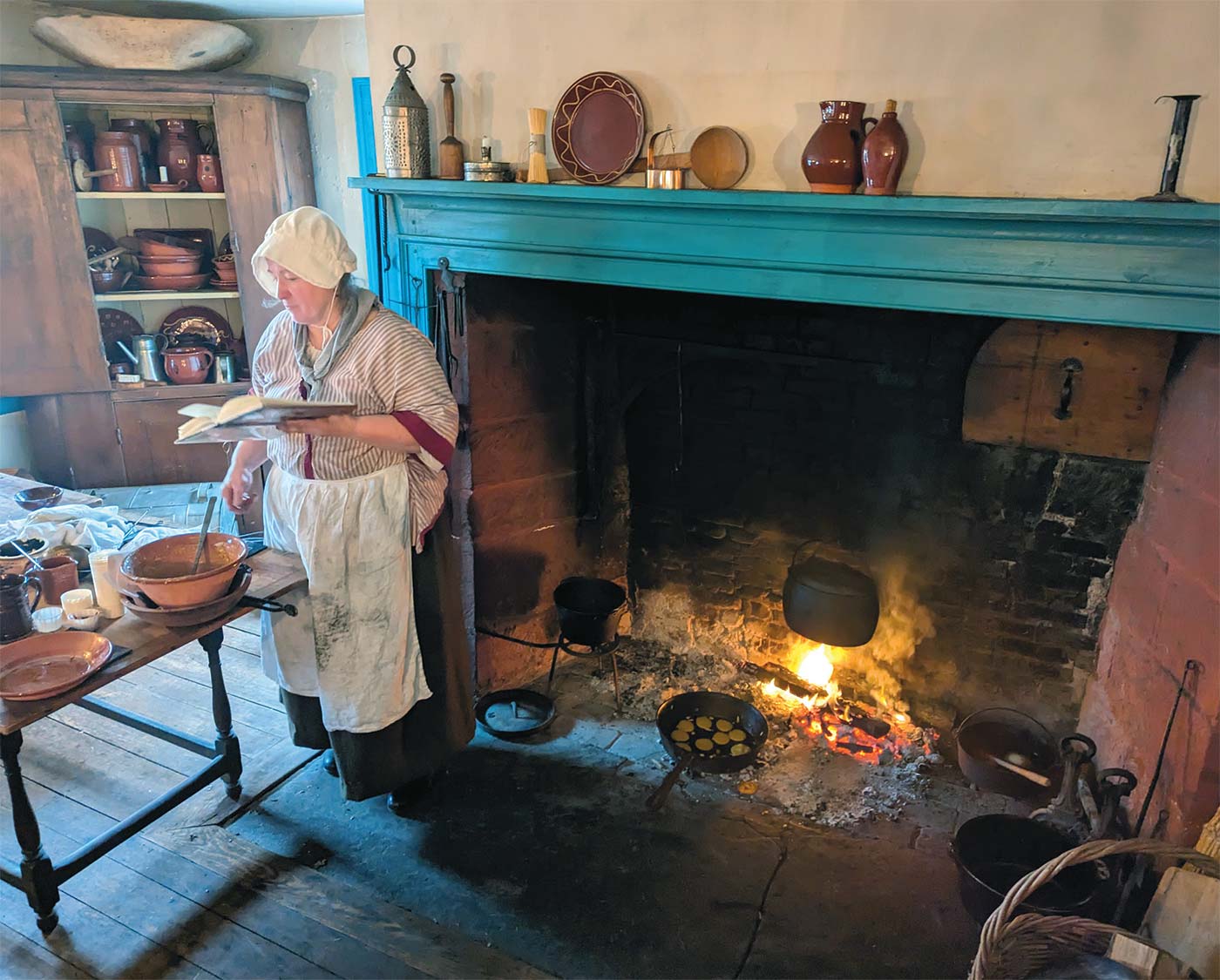Open Hearth Cooking
“I was always taught growing up that you [should] read your recipes completely before you start,” says Margaret Quinn, an open-hearth cooking expert and historical interpreter from Mercer County. “Sometimes, at the end they tell you something you should do in the beginning.”
Quinn scoops out gravy from a cast-iron pot while sharing noteworthy cooking tips to the audience huddled close to the flames. The Durand-Hedden House, Maplewood’s historical house museum, has become a warm refuge on this particularly rainy Sunday in January, as Quinn demonstrates 18th-century cooking to the crowd. The table is laden with shreds of purple cabbage, fluffy pancakes in shades of autumn, a cotton cloth filled with pounded sugar, and a wooden bowl of rising dough. Cutlery and ceramics are strewn across the wooden surface in stylistic chaos.
Hosted by Durand-Hedden almost every January, “Open Hearth Cooking, 18th c. Style” is one of the museum’s most popular annual events. Cooking over an open fire, of course, is the oldest way of cooking and fire-places were commonly used for meal preparation until stoves came into existence. Starting and tending to a fire for cooking was often an all-day task, involving a skill set and resourcefulness far different from what is required of today’s cooks. Types of wood, long-handled pots and utensils, keeping the hearth floor clean, and controlling the heat were just a few of the considerations.
“I feel like I was born in the wrong generation,” quips Rona K., an attendee from Maplewood, as Quinn talks through the process. “You know, it’s the kitchen and the style of cooking and all the tools; it’s just so beautiful to me.” Rona reveals that she grows lovage in her backyard, a vegetable that Quinn was hoping to use in the demonstration but couldn’t find.
“If I knew you were showing up [today], I would’ve asked you to bring your lovage,” Quinn teases before offering advice on how to best use the plant, including in stews and soups.
Banter between cook and attendees adds to the warmth of the atmosphere, brewing alongside the aroma of stewed duck, cabbage salad, pumpkin cornmeal, and the tongue twister known as oliebollen, which is Dutch fried dough. Quinn dons historically correct attire and jokes about owning affordable leather boots instead of top-quality ones, which are ideal when cooking by open flames.

STARTING AND TENDING TO A FIRE FOR COOKING WAS OFTEN AN ALL-DAY TASK.

“I find it very interesting because she’s demonstrating and cooking, but also there’s a lot of information [to learn] historically,” says Victoria Grosso, an attendee from South Orange. “It’s also great to sit right by the fire.”
Meanwhile, Quinn stoops over the flames in her woolen apron, brandishing a flesh fork in one hand and a Dutch cookbook in another. Cookbooks were not common in the 18th century as most home cooks knew their recipes by heart, but Quinn’s well-used tome is passed around for attendees to peruse; it’s titled The Sensible Cook: Dutch Foodways in the Old and the New World [Syracuse University Press, 1998]. The crowd leans forward eagerly to peer at the bubbling pot containing a whole duck; the faces of children and adults alike light up whenever samples of wine-soaked cabbage or sugar-dusted dough are doled out.
With tips ranging from using salt and sand to scour a cast-iron pot, to substituting parsnips for salsify, the audience has an elaborate experience of 18th-century cooking. The art and history of cooking requires technique, patience, and—greatest of all—heart to create a wholesome meal over the hearth.
“This is something we do almost every year,” says Gail Safian, president of the Durand-Hedden House. “The smell of the wood fire and cooking food really resonates in the winter.” The Durand-Hedden House offers programs every month except July and August.
The Durand-Hedden House was built in the late 18th century and mid-19th century and is named for Obadiah Hedden, its earliest documented resident, and Henry Durand, brother of famed Hudson River School landscape painter Asher B. Durand, whose family lived there from 1812 to 1866. The oldest part of the house, the room containing the hearth, was built by about 1780.
Durand-Hedden House & Garden
523 Ridgewood Road, Maplewood
durandhedden.org
The Durand-Hedden House is usually open one Sunday a month, September through June. The 2024 “Open Hearth Cooking” event is scheduled Sunday, January 21, 1-4pm.





